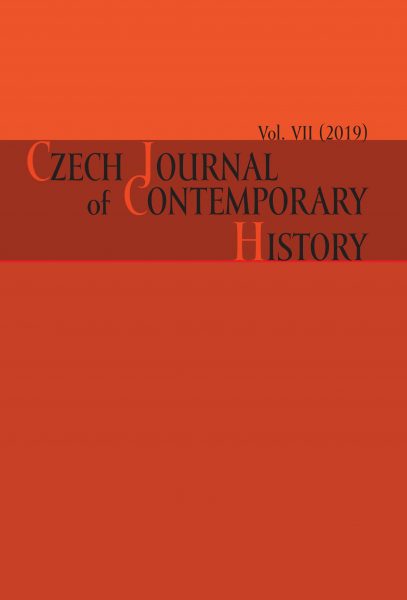A Thrown Gauntlet. Josef Serinek and Jan Tesař as a Challenge for Current Research into the History of the Roma in the 20th Century
A Thrown Gauntlet. Josef Serinek and Jan Tesař as a Challenge for Current Research into the History of the Roma in the 20th Century
Author(s): Helena SadílkováSubject(s): Ethnohistory, Military history, Political history, Recent History (1900 till today), Book-Review
Published by: AV ČR - Akademie věd České republiky - Ústav pro soudobé dějiny
Keywords: A Thrown Gauntlet; Josef Serinek; Jan Tesař; History of the Roma in the 20th Century;
Summary/Abstract: TESAŘ, Jan: Česká cikánská rapsodie [The Czech gypsy rhapsody]. Vol. 1: Vzpomínky Josefa Serinka [Recollections of Josef Serinek]; IDEM: Místo epilogu: Rozhovor s Josefem Ondrou [Instead of an epilogue: An interview with Josef Ondra; Documents]; Dokumenty [Documents]; Vol. 2: IDEM: Komentáře ke vzpomínkám Josefa Serinka [Comments on the recollections of Josef Serinek]; Vol. 3: Mapy, tabulky, diagramy: Partyzáni na Vysočině [Maps, tables, charts: Partisans in the Vysočina region]; IDEM: Serinkovské inspirace [Serinkian inspirations]. Praha, Triáda 2016, 502 + 635 + 208 pages, ISBN 978-80-87256-86-2. The authoress comments on the three-volume publication Czech Gipsy Rhapsody from the perspective of the current state of knowledge of the Romani history in the territory of Czechoslovakia. She states it is an inspiring work, both thematically and factually and in terms of methodology and interpretation. She emphasizes the uniqueness of the narration of Josef Serinek (1900–1964), recorded by historian Jan Tesař in 1963 and 1964, as one of the oldest sources of Romani provenience on the history of the Romani nation in the Czech Lands in the first half of the 20th century, including their wartime genocide. She dwells for some time on several topics closely related to specific moments of Serinek’s narration, namely the involvement of Romanies in fights for the liberation of Czechoslovakia, evidence concerning the so-called gipsy camp in Lety u Písku, consequences of the First Republic s law on “itinerant gipsies”, and Romani self-organization attempts in inter-war Europe. The strongest aspects of Tesař’s work are, in her opinion, Tesař's interpretation of the holocaust of Romanies in the Protectorate, which caused signifi cant damage to the whole Czechoslovak society, and the way in which Tesař sets Serinek, a Romani survivor and also a freedom fighter, into the narration about the genocide which the Czech population made a substantial contribution to. The authoress shows how fragile and unobvious is the Tesař s picture of Serinek as a “Romani hero of the Czechoslovak fight for freedom” in the collective memory of the Czech society, including its Romani segment.
Journal: Czech Journal of Contemporary History
- Issue Year: VII/2019
- Issue No: 7
- Page Range: 173-187
- Page Count: 15
- Language: English

